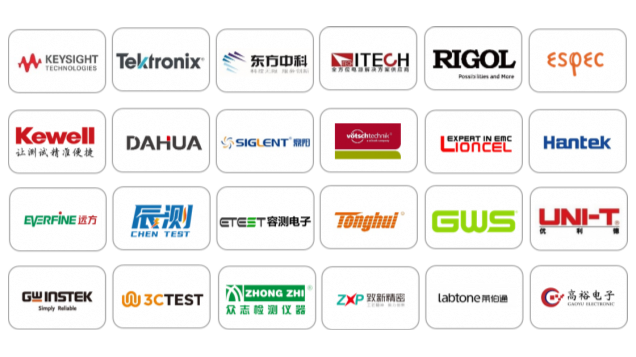Your Royal Highnesses, Your Excellencies, Distinguished Guests, Ladies and Gentlemen, a very good morning to you all.
Let me add my congratulations to GPCA and their partners for bringing this important Forum to the Kingdom for the first time.
And Riyadh – which aims to be among the 10 largest city economies in the world with Vision 2030 – is the ideal setting for the chemical industry to be just as visionary.
We meet when energy issues are the focus of unprecedented social, economic, and political turbulence around the world.
But one crucial component has been largely missing from the net-zero debate – the enormous impact that growth in material use will have on reducing global greenhouse gas emissions.
So today I want to talk about another transition – the materials transition.
It is just as important as the energy transition to climate protection, equally in need of action not words, and especially relevant to the chemical industry and its future strategies.
And global net-zero emissions goals will not be met without a successful materials transition, which is why I believe it will be the next big thing.
Let me first offer some context.
By 2060, the world’s population is expected to reach 10 billion people.
Eighty percent of them are projected to be living in cities by then.
And global GDP is forecast to quadruple.
People will rightly want a share of this, meaning demand for materials is also likely to increase considerably.
Indeed, demand is projected to more than double from 79 gigatonnes in 2011 to 167 gigatonnes in 2060.
And materials production, use, and eventual disposal already account for almost a quarter of all global CO2 emissions.
So the increase in materials use, even if somewhat decoupled from economic growth, will be shadowed by a further rise in CO2 emissions, particularly in hard-to-abate-industries.
Under a business as usual scenario, emissions from various industries are projected to increase substantially.
For example, emissions from concrete are projected to total almost 4 gigatonnes of CO2 by 2050 because of the growth in demand.
Meanwhile, the iron and steel sector accounts for more emissions than the whole of road freight, and global demand for steel alone is expected to rise by more than a third by 2050.
To help reduce emissions in this growth environment, more durable and more sustainable materials must be the building blocks of 21st century life.
Just imagine a future where skyscrapers, bridges, planes, cars – including electric ones – and even World Cup football stadiums are built with these advanced materials.
But to achieve a well thought-out and accelerated materials transition, cutting-edge R&D, innovation, and the necessary investments are essential.
This is where chemistry in action could shape a lower emission, more sustainable materials future.
To begin with, there is materials circularity, or what we call the Circular Carbon Economy.
Two notable examples include the world-first circular polymer by our affiliate, SABIC, and Aramco’s sustainable e-fuels.
Then there is materials efficiency.
There are opportunities throughout value chains.
It is not only by extending life cycles, but also achieving higher strength to weight ratios, and reducing materials losses during production and construction.
Lower carbon hydrogen will also play a major role, in a variety of applications in the chemical industry.
It can produce ammonia and methanol, or be used as a clean energy source in steam crackers, and in turn can produce more sustainable fertilizers, plastics, and other industrial products.
In fact, Aramco and SABIC recently obtained the world’s first independent certification recognizing the production of blue hydrogen and blue ammonia.
And the big opportunity for the chemical industry is to steadily supplement existing materials as their carbon footprint is lowered too, with more durable and sustainable ones, especially polymer- and carbon-based materials.
So I believe the industry should especially focus on finding optimal material solutions, with a lower carbon footprint, in high volume applications.
Opportunities in a wide range of industries such as housing, construction, infrastructure, automotive, renewables, oil and gas all come to mind.
Already, every 1 megawatt of installed renewable energy capacity utilizes 8 to 11 tonnes of petrochemicals-based materials.
And by doing so, a viable path to a truly sustainable materials future will be in reach.
That is exactly why we are strengthening our focus on materials transition at Aramco, and make it an central part of achieving our 2050 net-zero ambition.
The case for sustainable materials is also complemented by a powerful business case that is driving our world-leading chemicals growth ambitions.
Such ambitions add major value to our hydrocarbon resources, and make our business portfolio even more robust.
And no matter which energy transition scenario plays out, oil demand from the petrochemicals sector is likely to remain robust.
In fact, under a net-zero scenario, petrochemicals could still account for more than half of total global oil demand by 2050.
So the more intense the transition, the more important petrochemicals will be to the oil and gas industry, and other industries.
That is why our strategy – as highlighted by our Energy Minister, His Royal Highness Prince Abdulaziz bin Salman – to convert up to 4 million barrels per day of liquids into chemicals by 2030, supported by technology investments, is beginning to take shape.
Last month, we announced the first large-scale deployment of our crude-to-chemicals cracking technology at our S-Oil integrated downstream hub in Korea.
Here at home, His Royal Highness Prince Abdulaziz bin Salman, recently announced a joint project between Aramco and SABIC to develop a crude oil-to-chemicals complex in Ras Al-Khair.
These are major steps forward in our downstream business, and show the power of technical innovations to meet our ambitions.
More advanced, more sustainable materials would undeniably strengthen the power of our net-zero ambition and our chemicals strategies.
But to earn a larger share of the materials market in high volume applications, we must be cost competitive.
And right now, the cost of advanced composite materials is much higher than steel, aluminum alloys, and concrete.
So my broader call to action is threefold.
First, the chemical industry needs to strengthen and accelerate its innovation efforts to develop more durable and more sustainable materials, at scale, while reducing their cost.
Second, establishing an advanced materials center, here in the Kingdom, could strengthen and complement existing programs and push the boundaries of innovation through global collaboration.
Third, the energy crisis is forcing many chemical companies to cut operations or shut down, particularly in Europe.
With an abundance of fuels and feedstocks, and extensive range of support infrastructure, it has never been more attractive for overseas chemical companies to invest here.
Ladies and Gentlemen, a viable materials transition in parallel with a viable energy transition is urgently needed to build a new world made to last.
This is a unique opportunity for the chemical industry to take big decisions, redefine the materials of modern life, and make a decisive difference to both transitions and our planet.
What inspires me most, when I look at the exceptional global talent gathered here in Riyadh, is that I see an industry this is ready for action.
And an industry this is ready to make history.
Thank you.

 发布展会
发布展会
 发布资讯
发布资讯



 你可能喜欢的主页
你可能喜欢的主页




 今日话题
今日话题




























